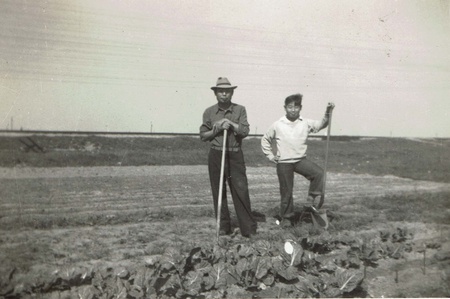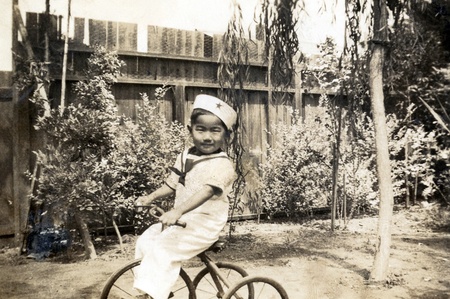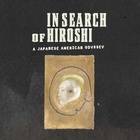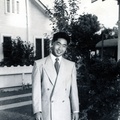It has been more than three decades since In Search of Hiroshi was published by the Charles E. Tuttle Company. Much has changed since then, both in myself and within our country. I am no longer a young man in search of himself, and it is our country which, at this writing, seems to be in search of its soul. Even so, I am deeply gratified that Kaya Press, which published my novel, Fox Drum Bebop, has found my memoir worthy of republication.
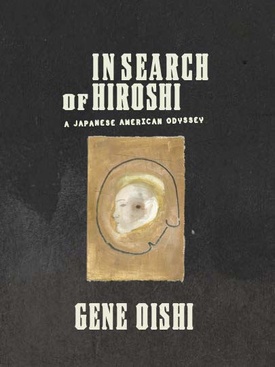
To this new edition, I have added an Epilogue to account for the changes that have taken place since the original publication. The French have a saying, plus ça change, plus c’est la même chose, which suggests that even when it appears outwardly that great changes have taken place, everything actually remains the same. The resurgence of racial prejudices and animosities in the United States might support this point of view, but my memoir is not about the state of our country, but about how I view my place in it. From this personal perspective, much has changed, and Hiroshi in meaning and context is no longer the same.
Hiroshi was based on my childhood experience of being one of the 110,000 Japanese Americans living on the West Coast of the United States arrested and put in concentration camps at the start of World War II and how that experience impacted my life. I considered changing the point of view by updating the narrative voice to take into account my dismay at the recent wave of racism and xenophobia that have become increasingly prevalent. But the book is a memoir that reflects my experiences and the cultural and political environment of the trauma I experienced in childhood and its enduring effects. It is a book written by one who had not yet found answers to questions about his past.
As the title implies, it is a search, not an autobiography written in the fullness of time. In the postwar years, I shrugged off the mass incarceration as one of those unfortunate events that will occur in war. Its effects on us, I thought, were mainly economic.
Before the war, my father had farmed vast acres of land in California’s Santa Maria Valley, employing hundreds of field workers. When Japanese naval forces attacked the U.S. naval base at Pearl Harbor on December 7, 1941, he was one of the many other leaders of Japanese communities on the West Coast of the United States arrested by FBI agents that very night. The rest of us were allowed to remain in our homes for a few months until camps were built in wilderness areas in the interior of the country. Japanese communities along the West Coast of the United States were emptied; farmers and businesses were ruined.
When we returned to our home after the war, my parents had to join labor gangs like those my father had employed before the war. Some of the work was done while stooping, but my parents were too old for that and had to shuffle along on their knees.
Strangely, it was only years later, when I was married with children of my own, that I fully understood the humiliation my parents had endured and the courage with which they faced and survived their impoverishment. Understanding the war and its aftermath came slowly and in unexpected ways.
One such moment was reading of soldiers returning from Afghanistan and Iraq who were diagnosed with PTSD and unable to make clear a clear connection between their problems and the trauma of combat. I was reminded of what used to be called “battle fatigue,” except that the new designation stressed psychic injuries showing up after the soldiers have come home where they were presumably safe. What interested me is that victims of PTSD were sometimes unable to make a clear connection between their problems and the trauma of combat. My guess is that some of these soldiers blamed themselves for whatever it was that troubled them. Some resorted to suicide, a solution I too have contemplated in the past.
I do not compare myself to soldiers returning from the horrors of war, except that in some cases they seemed to be in a state of denial. I insisted for years that I was not seriously affected by my wartime experience. My family and I were taken from our home and imprisoned in a place surrounded by barbed wire and guarded by soldiers armed with rifles with fixed bayonets and machine guns. My father had lost everything he had worked to build over four decades in America. I told myself that such things happen in war, and it took me years to get past the protective cloak I had wrapped around myself.
Long after the war, a white friend asked me to describe the camps and how we were treated. I told him the guards would strip us naked, tie us spread-eagled to stakes in the desert, and pour honey over us so that ants would come and feed on us. My friend laughed and protested my black humor. “Hey,” I said, clawing at my shirt, “you want to see the scars?”
More than two decades after the imprisonment, I still had difficulty talking about it. I did not dare look too deeply into myself to find out how I really felt about the experience, but my joke described my condition more accurately than I realized at the time. I was eaten alive in the desert, not by ants but by doubts—doubts about myself, my parents, and my cultural identity. I was assailed by notions that there was something wrong with me, or with my parents, or with Japanese generally.
Hiroshi had started out as a novel because I thought fiction was a better vehicle for exploring facets of my life that were based on childhood memories. But fiction, like music, touches on deep wells of feelings hidden from the conscious mind. I found myself unable to manipulate my memories in such a way as to produce the emotional impact, great or subtle, that fiction requires. When I once had a character in my story say, “I am Japanese,” I inexplicably broke into tears and could not continue. I remained, for years, in this emotional writer’s block.
I began to get a better understanding of the emotional baggage I was carrying when, in the early 1980s, National Geographic asked me to write an article about the postwar success of Japanese Americans. I traveled the country interviewing scores of Japanese, including first generation immigrants, their children, and their grandchildren.
Hearing their stories and residual feelings about their wartime experience took me out of my self-imposed isolation and I ended up writing not a happy success story about the “model minority,” but one of anguish, pain and unresolved fears and anger. National Geographic rejected it, but The New York Times Magazine published an abridged version headlined “The Anxiety of Being Japanese American.”
The interviews I conducted for the article made me realize that my childhood trauma that I had long suppressed was real and shared by other Japanese Americans throughout the country. That The New York Times Magazine would print my first-person account of my wartime experiences and their aftereffects gave me the incentive to write this book.
We are all affected by world events that are beyond our control but nevertheless profoundly shape and direct our lives. For me, like for millions of others, it was World War II. The war impacted Japanese Americans in a unique way that was not only financially ruinous, but also shook and threatened our very identity. I eventually gave a name to that still shaky sense of self, a Japanese American boy named Hiroshi to serve as my fictional surrogate. He became my lifeboat.
To survive emotionally, I needed to find Hiroshi who defined my place in this world. Socrates seemed on to something when he said that an unexamined life is not worth living. I found that my years of denial of my childhood trauma and my failure to examine and confront the damage it did to me, my family and Japanese Americans generally had been filled with confusion and avoidable pain.
The search for Hiroshi was a search for my own identity and to understand and to rid myself of this crippling burden I’ve been carrying through most of my life. To be sure, the woes of this world continue and I am like most of humanity, a leaf blown hither and yon by the wind. But my understanding of who and what I am is now with me and under my command.
*This is an excerpt from the revised edition of In Search of Hiroshi by Gene Oishi (2024).
© 2024 Gene Oishi


